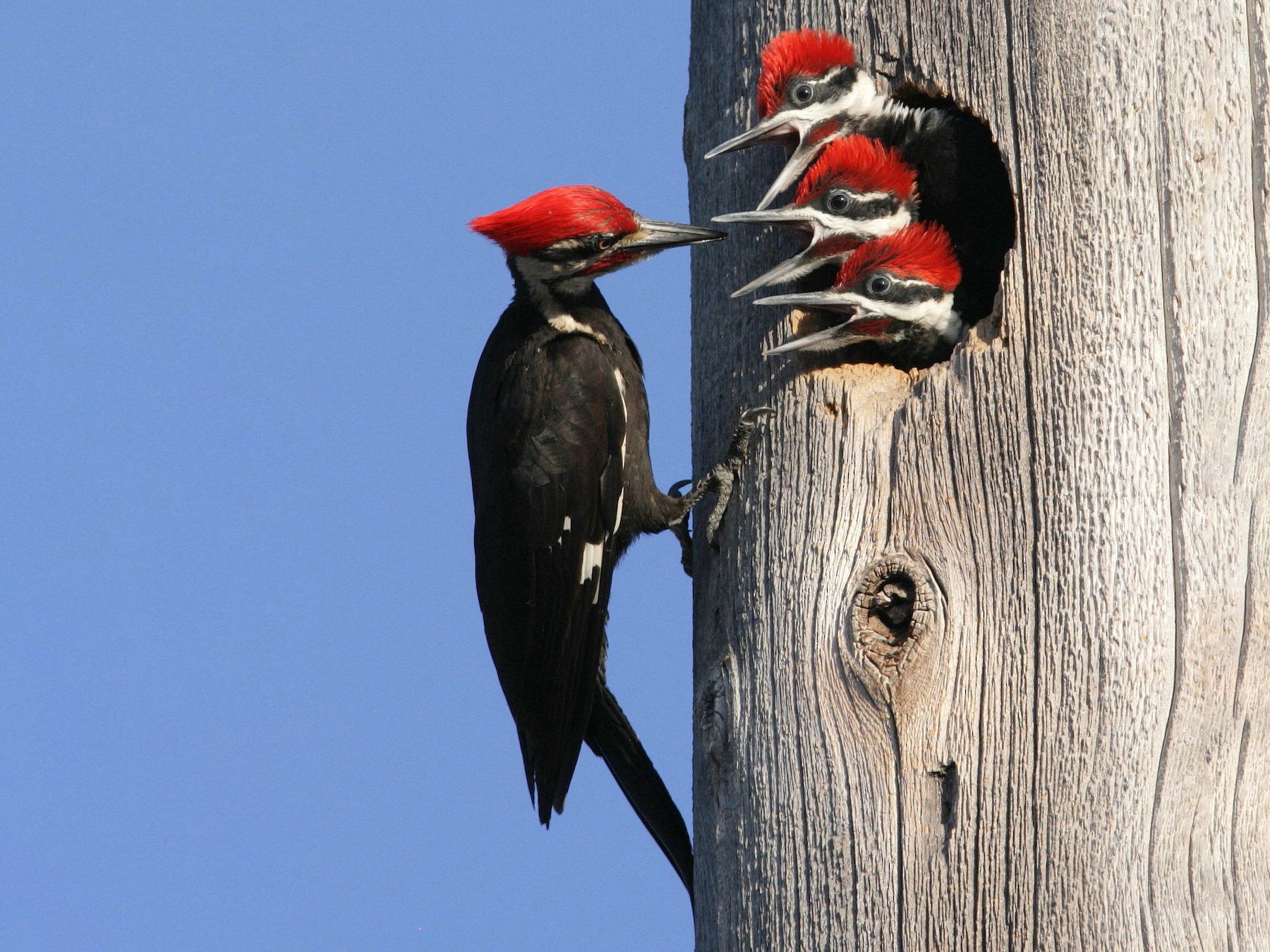Finding Woodpeckers in Florida: Species Variety and Nature
Wiki Article
Discover the Interesting Globe of Woodpeckers: Whatever You Required to Know
The globe of woodpeckers is a realm loaded with unique habits, intricate adaptations, and a varied range of varieties. From their habitats and circulation patterns to their feeding habits and specialized anatomical attributes, woodpeckers have long mesmerized the passion of ornithologists and nature lovers alike.Woodpecker Habitats and Distribution
Woodpeckers populate a varied range of environments worldwide, showcasing versatility in their circulation patterns. These resistant birds are located in woodlands, woodlands, savannas, and deserts across various continents, demonstrating their ability to flourish in different climatic conditions. In The United States and Canada, as an example, woodpeckers can be detected in both coniferous and deciduous woodlands, using their strong beaks to forage for insects and create nesting cavities in trees. Similarly, in Africa, specific woodpecker types have adapted to arid environments, such as the acacia woodlands, where they play an important function in managing insect populations./https://tf-cmsv2-smithsonianmag-media.s3.amazonaws.com/filer_public/30/ac/30acf469-09cd-4fcc-a812-1aa30f477578/aprmay2024_l09_woodpeckers.jpg)
Feeding Behaviors and Diet Plan
Woodpeckers utilize their solid beaks to drill into the bark of trees, probing for insects and larvae concealed under the surface area. In enhancement to bugs, woodpeckers also consume nuts, seeds, fruits, and sap.Woodpeckers are recognized for their drumming actions, which offers not just to interact with other woodpeckers but additionally to situate food. The fast drumming sound is created by the bird pecking on powerful surface areas like dead trees or metal poles. This behavior can bring in bugs hidden in the timber, enabling the woodpecker to find their existence and feed on them.
Unique Adjustments for Tree Climbing
In their experienced search of bugs hidden within tree bark, woodpeckers have advanced exceptional anatomical attributes that furnish them with one-of-a-kind adaptations for effective tree climbing. Among the key adjustments is their zygodactyl feet, with 2 toes aiming forward and two pointing backward, giving a solid hold on tree trunks. This specialized foot arrangement permits woodpeckers to stick to upright surfaces effortlessly, allowing them to move up and down trees with dexterity. Additionally, woodpeckers have tight tail feathers that work as a helpful prop while they climb up, aiding in equilibrium and stability. best site Their solid, chisel-like beaks are not just utilized for exploration into timber but likewise for gripping onto bark as they ascend tree trunks. In addition, woodpeckers have strong neck muscular tissues and a distinct head structure that take in the influence of constant pecking, permitting them to climb up vertically without triggering injury to their brains. These adjustments display the incredible evolutionary style that makes it possible for woodpeckers to navigate trees with precision and effectiveness.Diverse Woodpecker Variety Worldwide
With over 200 various types spread out throughout numerous environments worldwide, the family of Picidae encompasses an exceptional variety of woodpeckers. These birds can be located in woodlands, timberlands, savannas, and also city locations, showcasing their adaptability to different settings. From the famous Northern Flicker in North America to the colorful and evasive Crimson-backed Flameback in Asia, each woodpecker varieties shows special attributes in regards to quill, habits, and habitat choice.Woodpeckers vary significantly in size, with the diminutive Downy Woodpecker measuring around 6-7 inches in size, while the powerful Lineated Woodpecker can reach up to 17 inches - Woodpeckers in Florida. Their beaks also can be found in various shapes and sizes, mirroring their feeding routines. Some types specialize in removing bugs from tree bark, like the Acorn Woodpecker, while others, such as the Black-cheeked Woodpecker, feed upon fruits and seeds

Conservation Efforts and Difficulties
Conservation campaigns for woodpecker populations are vital in minimizing the impact of habitat loss and other dangers encountering these varied bird types. check this Woodpeckers encounter numerous obstacles click here now to their survival, primarily due to deforestation, urbanization, climate modification, and invasive types. To attend to these concerns, preservation initiatives concentrate on shielding and restoring woodpecker environments, implementing sustainable forestry practices, and raising recognition about the relevance of these birds in ecosystems.One substantial challenge in woodpecker conservation is the fragmentation of their habitats, causing isolated populations that are a lot more vulnerable to extinction - Woodpeckers in Florida. Preservationists function to develop wild animals passages and shielded areas that connect these fragmented habitats, allowing woodpeckers to relocate in between different areas for feeding, breeding, and shelter

Final Thought
In verdict, woodpeckers are remarkable birds with unique adaptations for tree climbing and feeding actions. Further research and conservation activities are required to make sure the survival of woodpeckers in the wild.Report this wiki page